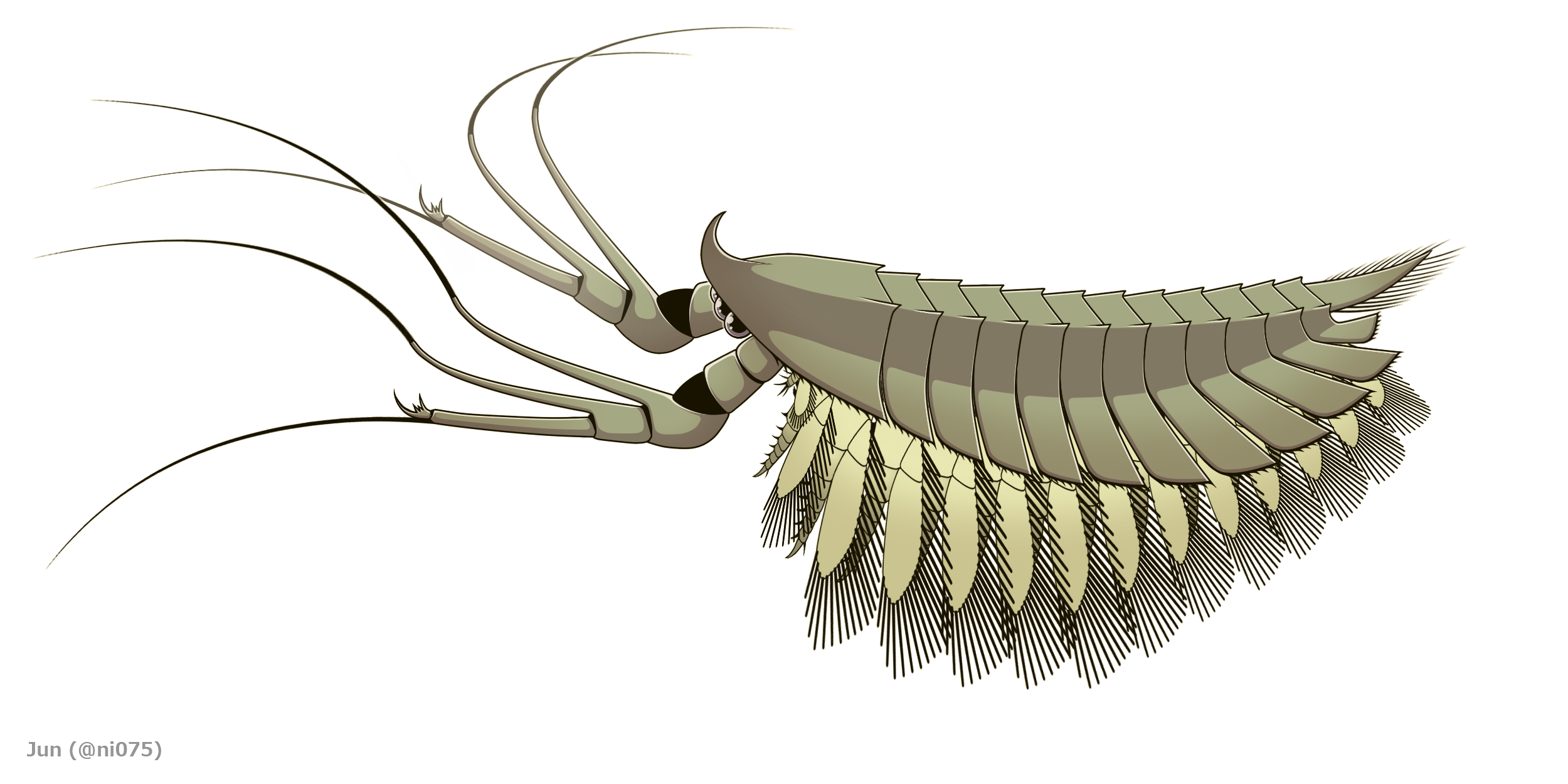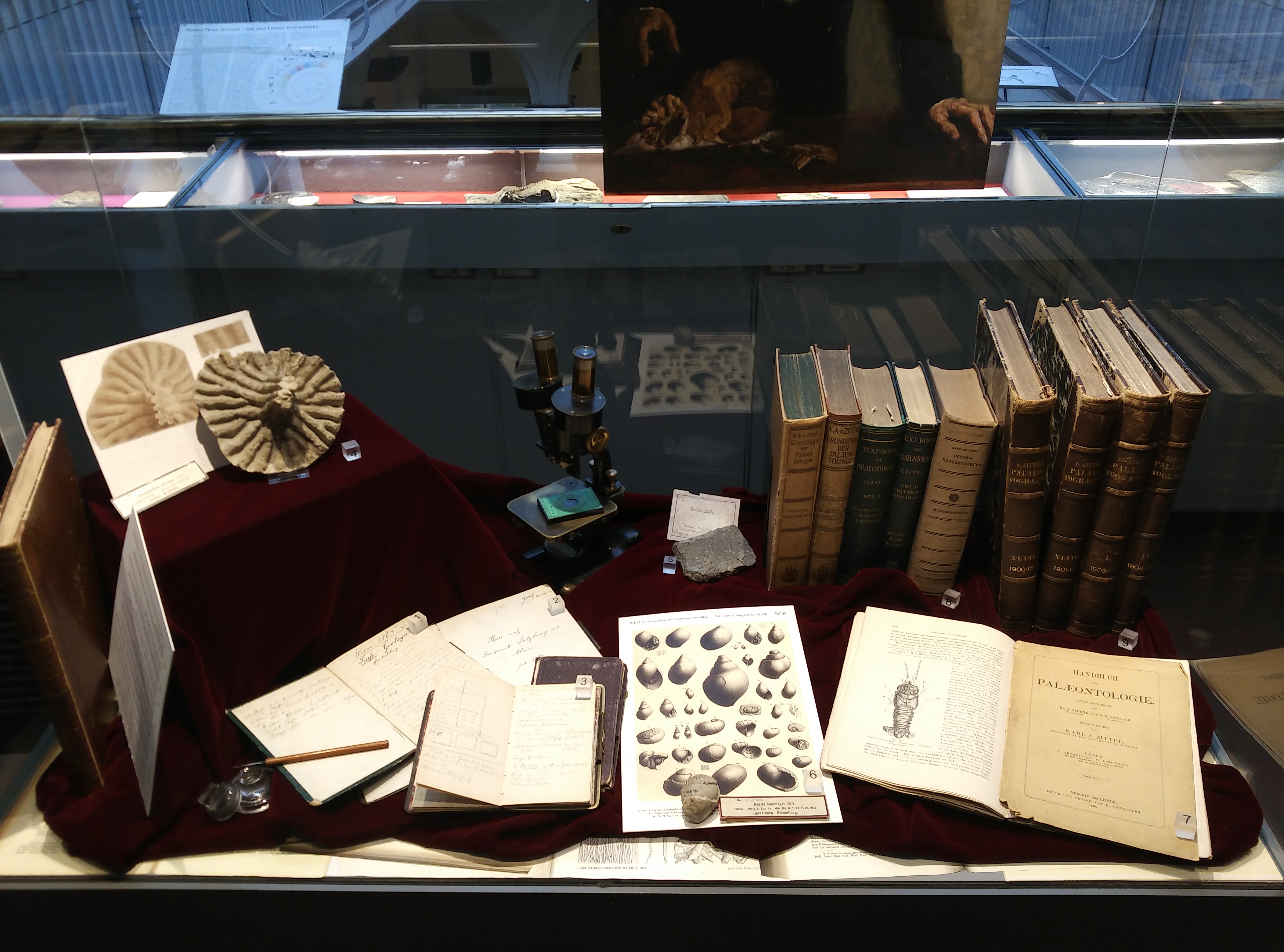|
Leanchoilia
''Leanchoilia'' is a megacheiran marine arthropod known from Cambrian deposits of the Burgess Shale in Canada and the Chengjiang biota of China. Description ''L. superlata'' was about long and had long, whip-like flagellae extending from its great appendages. Its internal organs are occasionally preserved within the substrate in three dimensions. Their two pairs of eyes are protected and covered by their exterior head shields, with two eyes being located on each side. Species Seven species are tentatively accepted today: ''L. superlata'' (the type species), ''L. persephone'' and ''L. protogonia'' from the Burgess Shale, ''L. illecebrosa'' and ''L. obesa'' from the Chengjiang biota, 'L. robisoni'' from Kaili, and ''L.''? ''hanceyi'' from the Spence Shale. ''L. superlata'' and ''L. persephone'' may however be examples of sexual dimorphism. Distribution 55 specimens of ''Leanchoilia'' are known from the Greater Phyllopod bed, where they comprise 0.1% of the community. S ... [...More Info...] [...Related Items...] OR: [Wikipedia] [Google] [Baidu] |
Megacheira
Megacheira ("great hands", also historically great appendage arthropods) is an extinct class of predatory arthropods defined by their possession of spined "great appendages". Their taxonomic position is controversial, with studies either considering them stem-group euarthropods, or stem-group chelicerates. The homology of the great appendages to the cephalic appendages of other arthropods is also controversial. Uncontested members of the group were present in marine environments worldwide from the lower Cambrian to the upper Ordovician. Morphology Megacheirans are defined by their possession of uniramous "great appendages", which are their first pair of head appendages. The first one or two proximalmost segments/ podomeres are spineless (it has been argued that the supposed first of the two proximal podomeres is actually an arthrodial membrane), while the remaining 3–4 more distal podomeres each typically bear a single upward pointing spine attached towards the distal en ... [...More Info...] [...Related Items...] OR: [Wikipedia] [Google] [Baidu] |
List Of Chengjiang Biota Species By Phylum
This is a list of fossils found at Maotianshan Shales, whose most famous assemblage of organisms are referred to as the Chengjiang biota. The Maotianshan Shales are a series of Cambrian, Early Cambrian Shale, sedimentary deposits in the Chiungchussu Formation, famous for their ''Lagerstätte, Konservat Lagerstätten'', deposits known for the exceptional preservation of fossilized organisms or Trace fossil, traces. The Maotianshan Shales form one of some forty Cambrian fossil locations worldwide exhibiting exquisite preservation of rarely preserved, non-mineralized soft tissue, comparable to the fossils of the Burgess Shale of British Columbia, Canada. Ecdysozoa Scalidophora Palaeoscolecid, Palaeoscolecidomorpha Priapulida Panarthropoda Lobopodia = Eoconchariidae = = Hallucishaniida, Hallucishaniids = = Lobopodia#Siberion_and_similar_taxa, Siberiidae = = Lobopodia#Gilled_lobopodians, Gilled Lobopodians = Radiodonta Radiodonta are a group of highly su ... [...More Info...] [...Related Items...] OR: [Wikipedia] [Google] [Baidu] |
Paleobiota Of The Burgess Shale
This is a list of the Biota (ecology), biota of the Burgess Shale, a Cambrian lagerstätte located in Yoho National Park in Canada. The Burgess Shale is a fossil-bearing deposit exposed in the Canadian Rockies of British Columbia, Canada. It is famous for the exceptional preservation of the soft parts of its fossils. At 508 million years old (Wuliuan, middle Cambrian), it is one of the earliest fossil beds containing soft-part imprints. During the Cambrian, the ecosystem of the Burgess Shale sat under 100 to 300 metres (330 to 1000 feet) of water at the base of a submarine canyon known as the Cathedral escarpment, Cathedral Escarpment, which today is a part of the Canadian Rockies. The ecosystem would have sat in dimly lit water, most likely at the edge, or in the Mesopelagic zone. The ecosystem was preserved by rapid mudslides that quickly buried organisms near, or on the seafloor, which helps explain the rarity of nektonic organisms at the site. The shale would have supported uniq ... [...More Info...] [...Related Items...] OR: [Wikipedia] [Google] [Baidu] |
Burgess Shale Fossils
The fossils of the Burgess Shale, like the Burgess Shale itself, are fossils that formed around 505 million years ago in the mid-Cambrian, Cambrian period. They were discovered in Canada in 1886, and Charles Doolittle Walcott collected over 65,000 specimens in a series of field trips up to the alpine site from 1909 to 1924. After a period of neglect from the 1930s to the early 1960s, new excavations and re-examinations of Walcott's collection continue to reveal new species, and statistical analysis suggests that additional discoveries will continue for the foreseeable future. Stephen Jay Gould's 1989 book ''Wonderful Life (book), Wonderful Life'' describes the history of discovery up to the early 1980s, although his analysis of the implications for evolution has been contested. The fossil beds are in a series of shale layers, averaging and totalling about in thickness. These layers were deposited against the face of a high undersea limestone cliff. All these features were ... [...More Info...] [...Related Items...] OR: [Wikipedia] [Google] [Baidu] |
Alalcomenaeus
''Alalcomenaeus'' is one of the most widespread and longest-surviving arthropod genera of the Early and Middle Cambrian. Known from over 300 specimens in the Burgess Shale and the Chengjiang biota. It is a member of the family Leanchoiliidae in the group Megacheira. Morphology ''Alalcomenaeus'' had three median eyes; two stalked, more lateral eyes; a triflagellate great appendage; and two more head appendages posterior to that. Like its body appendages, these were biramous—their inner branch was spiny, segmented, flexible and leg-like, while the outer portion had a large surface area and resembled a flap. ''Alalcomenaeus'' reached about 6 cm in length, although many smaller specimens are known. Its head was covered with a shield, and its eleven body segments were also covered with an exoskeleton. Its body terminated with a paddle-like telson ("tail") which probably helped to propel the organism; this ended with long flat spikes in the plane of the tail fin. Ecology T ... [...More Info...] [...Related Items...] OR: [Wikipedia] [Google] [Baidu] |
Arthropod
Arthropods ( ) are invertebrates in the phylum Arthropoda. They possess an arthropod exoskeleton, exoskeleton with a cuticle made of chitin, often Mineralization (biology), mineralised with calcium carbonate, a body with differentiated (Metamerism (biology), metameric) Segmentation (biology), segments, and paired jointed appendages. In order to keep growing, they must go through stages of moulting, a process by which they shed their exoskeleton to reveal a new one. They form an extremely diverse group of up to ten million species. Haemolymph is the analogue of blood for most arthropods. An arthropod has an open circulatory system, with a body cavity called a haemocoel through which haemolymph circulates to the interior Organ (anatomy), organs. Like their exteriors, the internal organs of arthropods are generally built of repeated segments. They have ladder-like nervous systems, with paired Anatomical terms of location#Dorsal and ventral, ventral Ventral nerve cord, nerve cord ... [...More Info...] [...Related Items...] OR: [Wikipedia] [Google] [Baidu] |
Chengjiang Biota
The Maotianshan Shales () are a series of Early Cambrian sedimentary deposits in the Chiungchussu Formation or Heilinpu Formation, famous for their '' Konservat Lagerstätten'', deposits known for the exceptional preservation of fossilized organisms or traces. The Maotianshan Shales form one of some forty Cambrian fossil locations worldwide exhibiting exquisite preservation of rarely preserved, non-mineralized soft tissue, comparable to the fossils of the Burgess Shale of British Columbia, Canada. They take their name from Maotianshan Hill () in Chengjiang County, Yunnan Province, China. The most famous assemblage of organisms are referred to as the Chengjiang biota for the multiple scattered fossil sites in Chengjiang. The age of the Chengjiang Lagerstätte is locally termed Qiongzhusian, a stage correlated to the late Atdabanian Stage in Siberian sequences of the middle of the Early Cambrian. The shales date to ≤. Along with the Burgess Shale, the Maotianshan Shales ar ... [...More Info...] [...Related Items...] OR: [Wikipedia] [Google] [Baidu] |
Yohoia
''Yohoia'' is an extinct genus of megacheiran arthropod from the Cambrian period that has been found as fossils in the Burgess Shale formation of British Columbia, Canada. The type species, ''Yohoia tenuis'', was described in 1912 by Walcott, who considered it an anostracan crustacean. 711 specimens of ''Yohoia'' are known from the Greater Phyllopod bed, where they comprise 1.35% of the community. In 2015, Conway Morris ''et al.'' reported another species, ''Y. utahana'', from the Marjum Formation, Utah. Description Fossil specimens of ''Yohoia'' range in size from 7 to 23 mm, they have a head shield which is followed by 13 trunk tergites, or plates. On both sides, the bottom side of the first 10 of these ended in backward-pointing, triangular points or projections. The last three plates were complete tubes, circling the entire trunk. At the end of the trunk was a paddle-like tail. There were also a pair of large extensions at the front of the head shield. They had ... [...More Info...] [...Related Items...] OR: [Wikipedia] [Google] [Baidu] |
Spence Shale
The Spence Shale is the middle member of the Langston Formation in southeastern Idaho and northeastern Utah. It is exposed in the Bear River Range, the Wasatch Range and the Wellsville Mountains. It is known for its abundant Cambrian trilobites and the preservation of Burgess Shale-type fossils. The type locality is Spence Gulch in southeastern Idaho, near the town of Liberty. It was first described by Charles Doolittle Walcott in 1908. Stratigraphy The Spence Shale spans the '' Albertella'' and '' Glossopleura'' biozones. Fauna Generic list of the fauna of the Spence Shale:Hammersburg, S.R., Hasiotis, S.T., Robison, R.R. 2018. Ichnotaxonomy of the Cambrian Spence Shale Member of the Langston Formation, Wellsville Mountains, Northern Utah, USA. Paleontological Contributions, 20, 1–66. Arthropoda Soft-bodied *''Anomalocaris'' *'' Canadaspis'' *''Caryosyntrips'' *'' Dioxycaris'' *'' Hurdia'' *''Isoxys'' *''Leanchoilia'' *'' Meristosoma'' *'' Mollisonia'' *''Sidneyia' ... [...More Info...] [...Related Items...] OR: [Wikipedia] [Google] [Baidu] |
Palaeontology (journal)
''Palaeontology'' is one of the two scientific journals of the Palaeontological Association (the other being '' Papers in Palaeontology''). It was established in 1957 and is published on behalf of the Association by Wiley-Blackwell. The editor-in-chief is Dr Paul Taylor (Natural History Museum, London). ''Palaeontology'' publishes articles on a range of palaeontological topics, including taphonomy, functional morphology, systematics, palaeo-environmental reconstruction and biostratigraphy. According to the ''Journal Citation Reports'', the journal has a 2021 impact factor The impact factor (IF) or journal impact factor (JIF) of an academic journal is a type of journal ranking. Journals with higher impact factor values are considered more prestigious or important within their field. The Impact Factor of a journa ... of 3.547, ranking it 3rd out of 54 journals in the category "Paleontology". References External links * Paleontology journals Academic journals establi ... [...More Info...] [...Related Items...] OR: [Wikipedia] [Google] [Baidu] |
GFF (journal)
GFF may refer to: Entertainment * Girlfriends Films, an American pornographic studio * Glasgow Film Festival, in Scotland * Gothenburg Film Festival, in Sweden Sports * Gabonese Football Federation * Gambia Football Federation * Georgian Football Federation * Göteborgs FF, Swedish football club * Gothenburg Football Association * Guinean Football Federation * Guyana Football Federation Other uses * ''GFF'' (journal), a geology journal * General feature format, a file format used for describing genes * Gesellschaft für Freiheitsrechte (Society for Civil Rights), a Berlin-based non-profit organization * Göteborgs FyrverkeriFabrik, a Swedish fireworks company * Griffith Airport, in New South Wales, Australia * Griffith railway station Griffith railway station is located on the Yanco–Griffith line in New South Wales, Australia. It serves the city of Griffith. History Griffith station opened on 3 July 1916 when the Temora-Roto line was extended from Barellan. ... [...More Info...] [...Related Items...] OR: [Wikipedia] [Google] [Baidu] |








